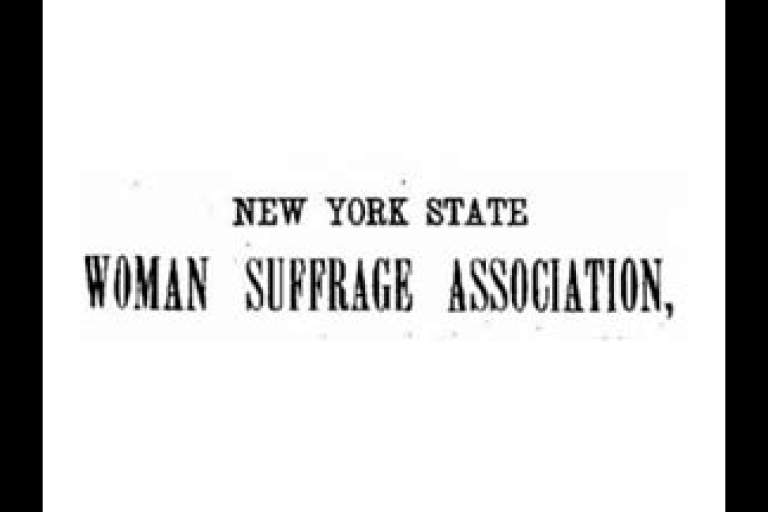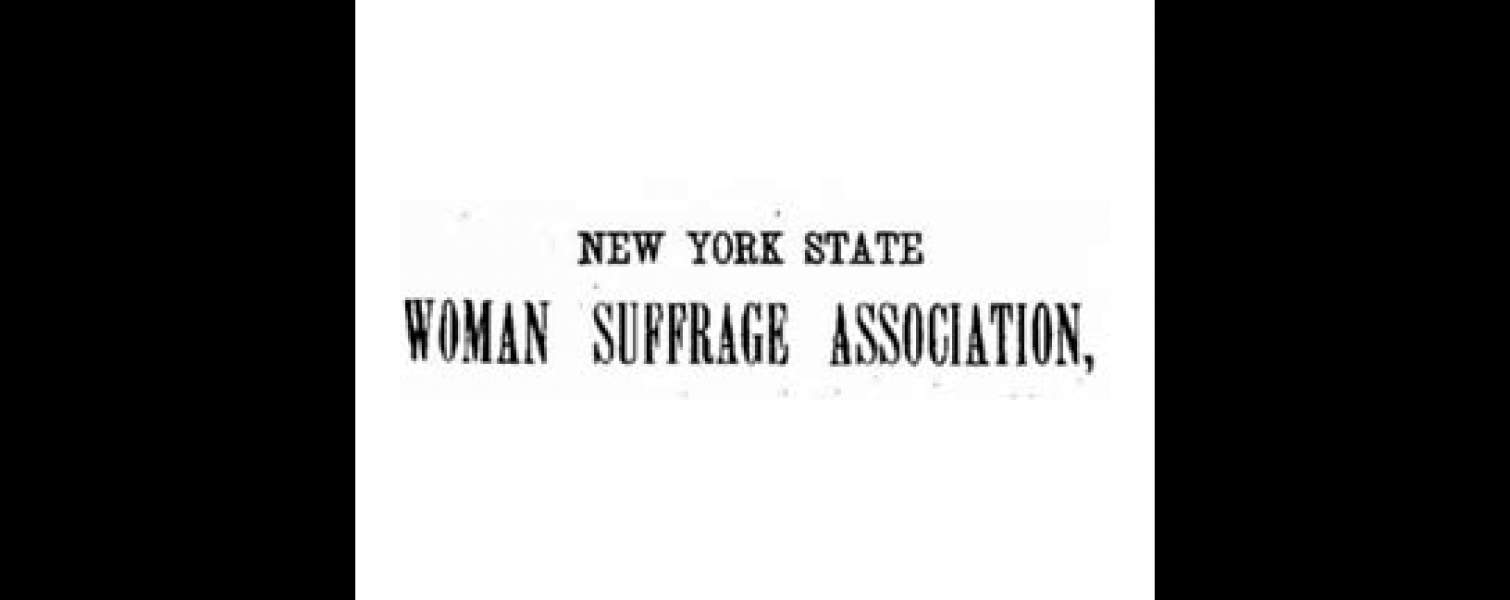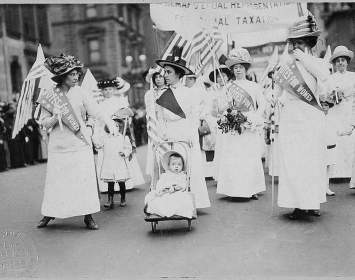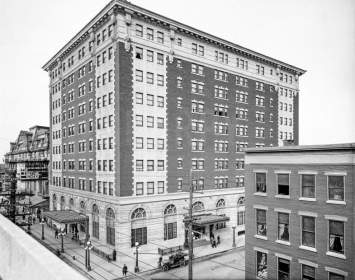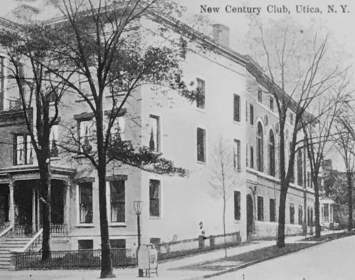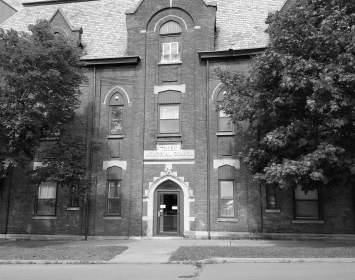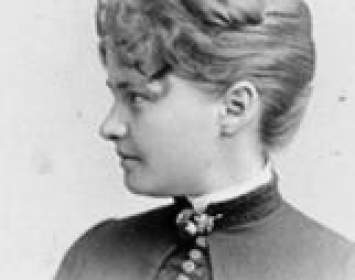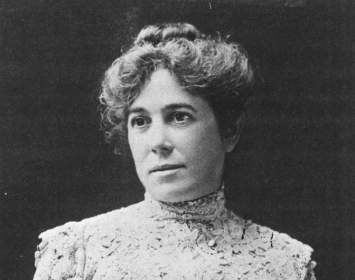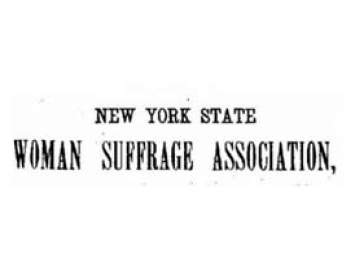The forty-fourth annual convention of the New York State Woman Suffrage Association (NYSWSA) was held at Utica, New York, on Tuesday through Friday, October 15–18, 1912. (Nineteenth-century practice was to use the singular, woman's; later practice was to use the plural, women's.) An estimated eighty to 100 delegates attended. The Hotel Utica served as the convention headquarters.The Thorn Memorial Chapel of the Tabernacle Baptist Church housed most of the plenary sessions. And one session aimed toward the general public was held at the New Century Auditorium.
A notable attendee was Elisabeth Freeman, an English suffragist who had recently moved to the United States. She would go on to become a prominent and extremely active American suffrage activist.
The Addams Mystery. Perhaps the most intriguing detail about this convention is that prominent suffragist and social-work pioneer Jane Addams was announced as the keynote speaker but did not appear. Two possible explanations for her absence seem plausible.
The first begins in August 1912, when the upstart Progressive Party (a new and liberal third party, popularly known as the Bull Moose Party) held its presidential nominating convention. Two-time former president and party founder Theodore Roosevelt was the party’s nominee. Addams gave a speech seconding his nomination, the first time a woman had given a speech seconding a nomination at a bona fide political convention. In addition, four women were appointed to serve as members-at-large on the party's National Committee. These actions sparked controversy among suffragists, especially more politically conservative ones. Both Anna Howard Shaw in her capacity as president of the National American Woman Suffrage Association (NAWSA) and Harriet May Mills in her capacity as president of NYSWSA felt compelled to issue open letters stating that the suffrage movement remained neutral in the presidential campaign and that any suffragists who lent their energy to the Roosevelt campaign must do so as individuals. It is possible either that Addams was disinvited as a convention speaker or that she voluntarily withdrew to limit further contention.
The second possible explanation for Addams’s absence turns on a campaign speech Roosevelt delivered in Milwaukee, Wisconsin, on October 14, the day before the convention in Utica was scheduled to begin. Roosevelt was shot by a deranged New York saloon-keeper. The .38 caliber round struck a metal eyeglass case and passed through a thick sheaf of papers in a jacket pocket before striking Roosevelt in the chest. An expert hunter, Roosevelt swiftly deduced that his wound was not life-threatening. He proceeded to deliver a ninety-minute speech in its entirety before consenting to receive medical attention. (Roosevelt famously quipped, "I have just been shot, but it takes more than that to kill a Bull Moose.") The keynote speech Addams was to deliver at Utica had been scheduled for the evening of Thursday, October 17. So it is likely that Addams might still have been in her native Chicago when Roosevelt was shot. Roosevelt was whisked to Chicago's Mercy Hospital for care of, among other things, a broken rib. Addams was one of few visitors whom Mrs. Roosevelt allowed to visit her husband's bedside. Addams was photographed leaving the hospital while the convention was going on. The photo may even have been taken on October 17, the day Addams was scheduled to speak in Utica.
The current state of research does not clarify which of these scenarios is more likely. In any case, media furor over Roosevelt's attempted assassination apparently distracted from coverage of the suffrage convention, with the result that the forty-fourth convention at Utica is one of the most obscure NYSWSA gatherings among those held in west-central New York.
The Convention Program.
Tuesday, October 15. A meeting of the State Executive Committee was held in the morning, presumably at the Hotel Utica.
The convention’s first public session began at 2:00 p.m. at Thorn Chapel. Welcoming addresses were delivered by Frank J. Baker, mayor of Utica; by Lucy Carlile Watson, president of the Utica Political Equality Club and the convention’s chair for local arrangements; and by Julia Terett, president of the Clinton Political Equality Club. (Political Equality Clubs were local organizations affiliated with NYSWSA.) There followed the annual addresses of NYSWSA president Harriet May Mills and vice president Marie Jenney Howe. Committee reports were then heard.
From 4:30 to 6:00 p.m., the Utica Political Equality Club hosted an informal reception in the parlors of Thorn Chapel. This was a rare instance when the reception associated with a NYSWSA convention held in west-central New York took place in the same building where plenary sessions occurred.
On Tuesday evening, delegates returned to Thorn Chapel for a session chaired by Marie Jenney Howe in which twenty objections to woman suffrage were answered by twenty speakers limited to five minutes per person. Among them, frequent convention speaker Julia Regula Jenney (Syracuse’s first woman attorney) rebutted the argument that “Given the vote, woman would take all the offices from the men.” NYSWSA corresponding secretary Katharine Hulst Gavit of Albany disposed of the objection that “Woman’s place is in the house.”
Wednesday, October 16. The Wednesday session began at Thorn Chapel at 9:00 a.m. with conferences on press outreach and local organizing work, followed by reports of standing committees and introduction of representatives from like-minded organizations. Dr. Lavinia R. Davis of Oneida presented a greeting for the Women's Christian Temperance Union, which made a sometimes-uncomfortable common cause with suffrage organizations.
At noon, open-air meetings were held at Elizabeth and Genesee Streets downtown and at a local knitting mill.
The plenary session reconvened at 2:00 p.m. Reports on legislative and political work were presented, followed by discussions of new methods in suffrage propaganda. Isabel Howland of Sherwood reported on the New York State Fair, which that year had uncharacteristically denied NYSWSA its usual permit to hold meetings and events on the grounds during the fair’s run. Also, actress Gertrude Nelson Andrews held a training on public speaking skills.
From 7:00 to 8:15 p.m. Wednesday evening, model open-air meetings were held at Oneida Square, at Franklin Square, and at Steuben Square. Organized by Laura G. Collins, the purpose of these meetings was to expose delegates from all parts of New York State to methods of educating the general public about suffrage through open-air oratory.
At 8:30 p.m., delegates reconvened at Thorn Chapel to hear Rosalie Jones, Mary Gray Peck, and Elizabeth Hauser speak on “What Happened in Ohio.” (A suffrage amendment in that state had recently been defeated; the presenters argued that the energy invested in educating Ohio women about suffrage would not go to waste in the long term.)
Thursday, October 17. The morning session at Thorn Chapel was given over to various kinds of Association business. A conference of organizers was followed by the annual elections. Elected were:
- President, Harriet May Mills of Syracuse (who suggested that a younger and stronger woman should be elected in her place but when re-elected agreed to serve for one more year);
- Vice President at Large, Marie Jennie Howe of New York;
- Recording Secretary, Nichola Shaw Fraser of Geneseo;
- Corresponding Secretary, Katharine Hulst Gavit of Albany;
- Treasurer, Mrs. William M. Ivins of New York
- First Auditor, Fanny Garrison Villard of New York; and
- Second Auditor, Mrs. Dexter P. Rumsey of Buffalo.
Fanny Garrison Villard, daughter of the important abolitionist journalist William Lloyd Garrison, was unable to attend in person due to illness.
Discussion turned to where NYSWSA's next convention would be held. The debate was dominated by Binghamton suffrage activists Margaret Topliff (a NYSWSA board member) and Ida Wales Gitchell, who were determined that the next convention should be held in their home town. Though other cities also vied for the event, Topliff and Gitchell campaigned so effectively for Binghamton that it was selected to host the 1913 event.
The convention also passed a resolution to send a telegram to the wife of Theodore Roosevelt extending sympathy to her and her family in connection with the recent attempt on his life. Also a telegram was read from Ella H. Crossett; an eighty-year former NYSWSA president, she was confined to a santiarium "for her health." (She would appear in person at the following year’s convention in Binghamton.)
At 8:00 p.m., “a meeting of special interest to the public” was held at New Century Auditorium. This was to have been the keynote address by Jane Addams; in her absence, representatives of the Democratic, Republican, and Progressive Parties spoke and were quizzed by organizers on what each party had done of late to support the suffrage cause. A Socialist Party representative was invited but did not appear.
Friday, October 18. On Friday morning, the concluding business of the convention was done, adjourning in time to allow an executive meeting before noon. Presumably all this activity took place at the Hotel Utica. Delegates were elected to represent NYSWSA at the NAWSA convention to be held in November in Philadelphia. Among them was Lucy Carlile Watson. The board also passed a resolution of regret over the death of Anne Fitzhugh Miller, daughter of famed suffragist Elizabeth Smith Miller. Elizabeth had died in 1911, aged eight-eight; Anne died on March 1, 1912, aged fifty-five.
Thanks to Janice Reilly and M. P. Connors of the Oneida County History Center and to Christopher Philippo for research assistance.
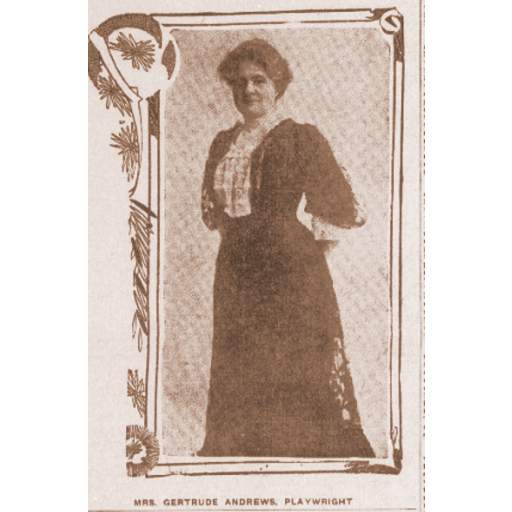
Gertrude Nelson Andrews
Actress Gertrude Nelson Andrews taught a public speaking workshop at the Utica convention.
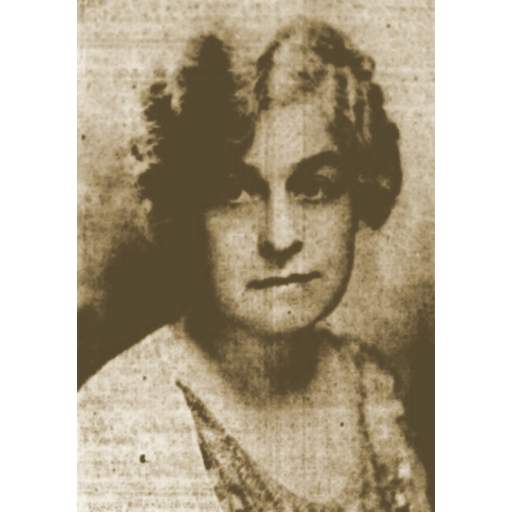
Marie Jenney Howe
Marie Jenney Howe was vice president of the New York State Woman Suffrage Association, serving under president Harriet May Mills.
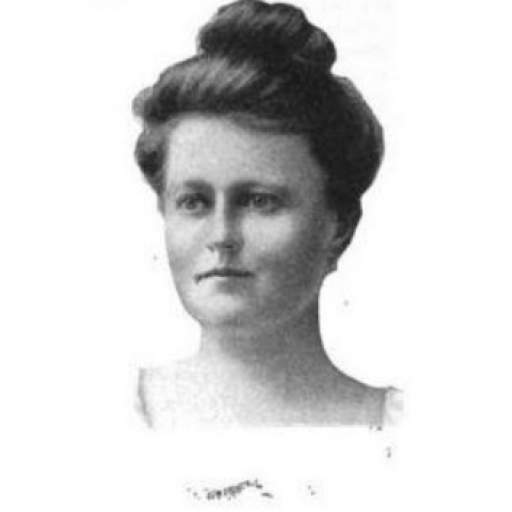
Julia Regula Jenney
Syracuse's first woman attorney, Julia Regula Jenney, spoke at three NYSWSA conventions in west-central New York.

Margaret Cameron Topliff
Margaret Cameron Topliff, a NYSWSA board member from Binghamton, campaigned successfully to have the following year's convention held in her home city.

Elisabeth Freeman
English suffragist Elisabeth Freeman made her American debut at this convention. She would go on to become a prominent U. S. suffrage activist.

Jane Addams
Suffragist Jane Addams (1860–1935) cofounded the famed Chicago settlement house Hull House and is considered the founder of the discipline of social work. She was the announced keynote speaker at the 1912 Utica convention but did not appear.
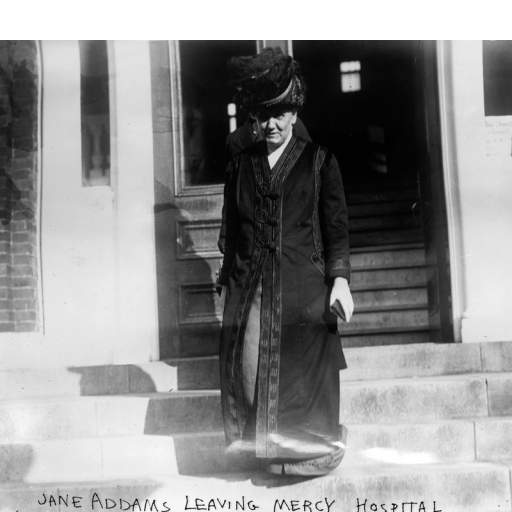
Addams after Visiting Roosevelt
Newspaper photograph shows Jane Addams leaving Chicago's Mercy Hospital after visiting Theodore Roosevelt, probably October 17, 1912. No wonder she didn't speak at Utica that evening!
